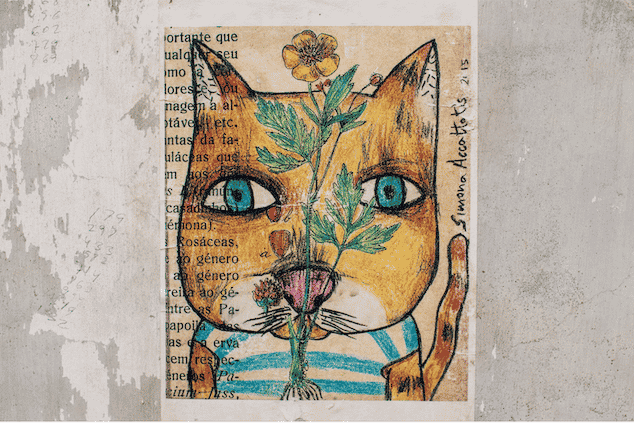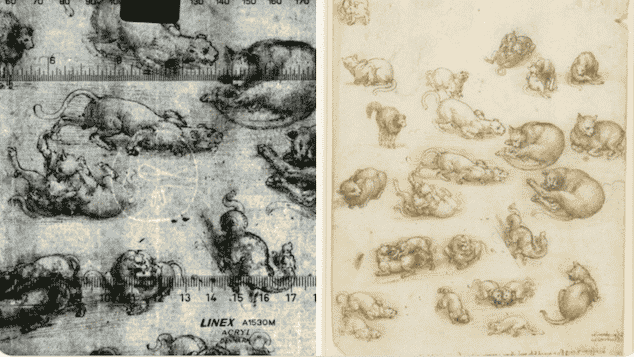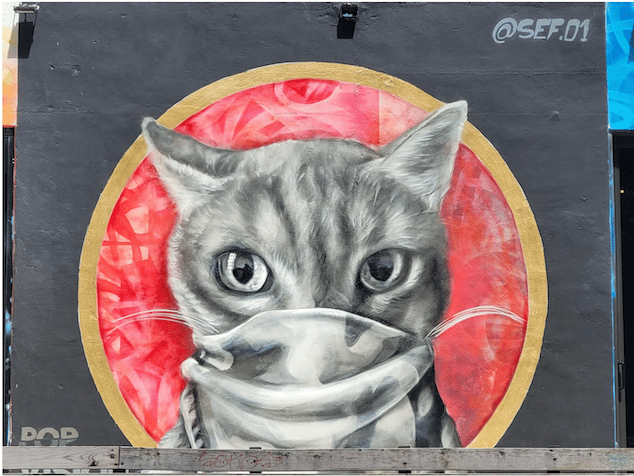
Cats in art history: How felines came to be lovingly embraced in popular contemporary culture after first appearing symbolically in the Ancient Art world.
The cat has lived side by side with humans since the dawn of time. Images of a cat can be found on Egyptian papyri and ancient Roman mosaics. But still, the cat became the main symbol of painting only by the 20th century. In the course of history, the role of a cat in human life has undergone changes; at the same time, the attitude towards a cat has also changed and, accordingly, the place of a cat in art.
It’s believed that a man tamed a cat to protect the crop from rodents. Even today, some breeds such as the himalayan cat demonstrate great hunting skills and try to make their owner “happy” by bringing them small animals as proof of their usefulness.
In Europe, domestic cats lived both in the days of Ancient Greece and in the times of Ancient Rome, performing this function as guardians of food. Cats lived next to people – but in the backyards of their dwellings and in the backyards of consciousness. Accordingly, in art, they appeared only as a tiny, insignificant detail of the background. For example, no matter how hard you’ll be looking among the completely lost paintings of Van Gogh, you won’t find a cat masterpiece there, it’s just the topic that concerns most artists.
In the Middle Ages in Europe, a cat was considered an unclean animal, close to the devil and dark forces. From here came a lot of superstitions and rituals associated with cats. Recipes for many magical potions include something feline – fur, entrails, claws. But despite the secret dark forces that hovered around the image of a cat in those days, there was no final break in relations: cats were still necessary to fight rodents. They were overthrown from the podium, they were no longer worshiped, as in ancient Egypt, and there were no sacrifices in their honor, as in ancient China, but they weren’t completely exterminated, because without them people would have been at the mercy of rats.
The turning moment occurred in contemporary times (17-18 centuries): the cat moved from the backyard to the front porch, and then into our souls, where it has firmly established itself and continues to exist to this day. Initially, the cat appears as an accessory in portraits and still lifes: it is not the focal point of the composition, but it is obviously a crucial semantic component. The cat enhanced the softness, sensitivity, and suppleness of the young girls in the pictures with a cat in their hands. In static still lifes, the cat provided activity and intrigue: the cat was usually represented snatching food. However, this theft was seldom punished; instead, it was frequently presented with humour and clear love for the victim.

Animal painters appeared only in the 18th century. In order for the animal to become the central element of the picture, a fundamental change in the minds of people is necessary – after all, there should have been a demand for such paintings. People had to want to order, buy, and hang pictures of their pets on the wall. And this trend reflects the changed attitude towards pets in general and cats in particular.
Animalism as a genre may have evolved from still life, which included images of animals: gradually cats and dogs come to the fore, and what was the purpose of the image in still life becomes only a background. This is a nice example of art evolution’s irony.
It’s important to admit that animalism is considered a low genre, the artists who define the style of the era don’t work in it. In the paintings of Renoir, Degas, and Gauguin, cats are found, but somewhere in the background, under the table, in the corner. The picture is clearly not written with the aim of depicting a cat. The cat is a random element there, without which, in principle, you can create the same image. However, Leonardo da Vinci liked to watch cats for a long time. He sketched them in a variety of poses, studied their habits, made sketches of scenes of struggle, washing, deftly grasping the game, and manifestations of anger and joy.
But the demand for paintings by animal artists slowly but surely grew: portraits of pets became fashionable, they were ordered by both crowned persons and people of average means. A situation was created when an artist who paints exclusively cats could completely feed themselves with orders – a situation previously unthinkable: in an era when cats served as a mousetrap and nothing more, it’d never have occurred to anyone to order its portrait and hang it in their living room.

Images of cats were initially awkward and far from flawless in terms of drawing: skill and experience have been accumulated over the years, and this is a collective process – artists borrow successful finds from each other in the field of composition, transfer of certain details, painting techniques. Gradually, a number of stereotyped techniques are being developed that make life very easy: the artist does not need to study cat anatomy and plasticity from scratch, the artist learns not only from nature but also from his predecessors. In an era when there were no cameras, and a little later, when technology was not yet capable of capturing fast moving objects, an animal artist had to have an excellent visual memory, know the structure of a cat’s body well, and understand all the features of its movements.
At the beginning of the 19th century, with all the desire of artists for maximum realism, the images of a cat still suffer from many flaws. This is partly due to the fact that experience in depicting cats hasn’t yet been accumulated, partly due to the skill of a particular artist. A century later, the formal tasks were already solved, the technique was perfected – the artists finally figured out what a cat looks like and learned how to depict cats with the maximum degree of certainty. Template techniques appeared, and generally accepted and well-recognized schemes were developed. Long observations helped to catch all the main details in the form of a cat and discard the secondary ones. Slowly, a recognizable image of a cat was formed in painting, and it’s recognizable precisely thanks to these patterns and schemes, which the observer’s eye clings to, mentally “completing” a drawn cat to a living one.
The painting by E. Manet (1832 – 1883) “Olympia”, created in 1863 and exhibited at the Paris Salon in 1865, depicts a young girl resting on a bed covered with a light-colored bedspread. The girl has no clothes and jewelry, except for a red flower in her hair, a black lace around her neck and sandals on one leg. Olympia, together with a white veil, forms a large white spot on a black background, on which is placed the head of a black woman offering a bouquet, and a black cat.
In the 20th century, a departure from realism begins in the visual arts in general, and in animal painting in particular. Schematic and abstract images of cats appear, but sometimes they convey the essence of a cat much better than paintings made with photographic accuracy.
At the same time, the cat is firmly established in book illustrations – and here there is an unusual variety of cat images – as well as on postcards, calendars, and various kinds of souvenirs.






